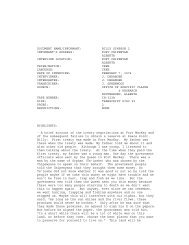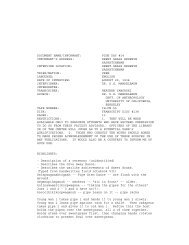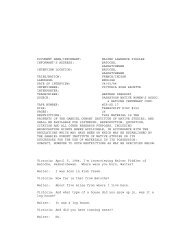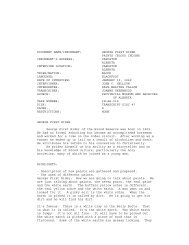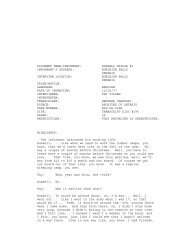Contents of It's not All in Your Head by Asmundson and Taylor
Contents of It's not All in Your Head by Asmundson and Taylor
Contents of It's not All in Your Head by Asmundson and Taylor
Create successful ePaper yourself
Turn your PDF publications into a flip-book with our unique Google optimized e-Paper software.
Bleichhardt et al., 2005; Wattar et. al., 2005), <strong>and</strong> psychoeducational groups (e.g.,<br />
Buwalda et al., 2008). Some studies provided participants with psychoeducational<br />
booklets <strong>and</strong> other media (e.g., Buwalda et al., 2008; Seivewright et al., 2008). Study<br />
designs <strong>in</strong>cluded r<strong>and</strong>omized controlled trials with wait-list control groups (e.g., Barsky<br />
& Ahern, 2004; Buwalda et al., 2008; Seivewright et al., 2008), comparison <strong>of</strong> CBT to<br />
a<strong>not</strong>her treatment (e.g., Sorensen et al., 2010), CBT for health anxiety <strong>and</strong> a comorbid<br />
disorder (e.g., Bleichhardt et al., 2005), or a s<strong>in</strong>gle-group design (e.g., Bouman, 2002;<br />
Martínez & Botella, 2005; Wattar et. al., 2005). Most <strong>of</strong> these studies did <strong>not</strong> provide<br />
effect sizes <strong>and</strong> when possible, they were calculated us<strong>in</strong>g the Effect Size Calculator<br />
(Becker 1999) <strong>and</strong> presented below.<br />
The latest <strong>in</strong>dividual CBT for health anxiety studies <strong>in</strong>cluded many <strong>of</strong> the<br />
previously expla<strong>in</strong>ed components (e.g., cognitive <strong>and</strong> behaviour therapy, ERP, BSM,<br />
psychoeducation) while some also <strong>in</strong>cluded m<strong>in</strong>dfulness tra<strong>in</strong><strong>in</strong>g (a form <strong>of</strong> cognitive<br />
therapy; e.g., Sorensen et al., 2010; Wattar et al., 2005) <strong>and</strong> assertiveness tra<strong>in</strong><strong>in</strong>g<br />
(Bleichhardt et al., 2005). Sorensen <strong>and</strong> colleagues (2010) evaluated the relative efficacy<br />
<strong>of</strong> CBT (n = 20) <strong>and</strong> short-term psychodynamic psychotherapy (STPP; n = 20) compared<br />
to a wait-list control (n = 40). The CBT component <strong>in</strong>volved eight <strong>in</strong>dividual sessions (45<br />
m<strong>in</strong>utes each) followed <strong>by</strong> eight group sessions (5-9 participants per group; 90 m<strong>in</strong>utes<br />
each). STPP <strong>in</strong>volved 16 weekly sessions (50 m<strong>in</strong>utes each) focus<strong>in</strong>g on the <strong>in</strong>fluence <strong>of</strong><br />
the unconscious, the therapeutic relationship, <strong>in</strong>terpersonal <strong>in</strong>teractions, <strong>and</strong> themes <strong>in</strong><br />
23



